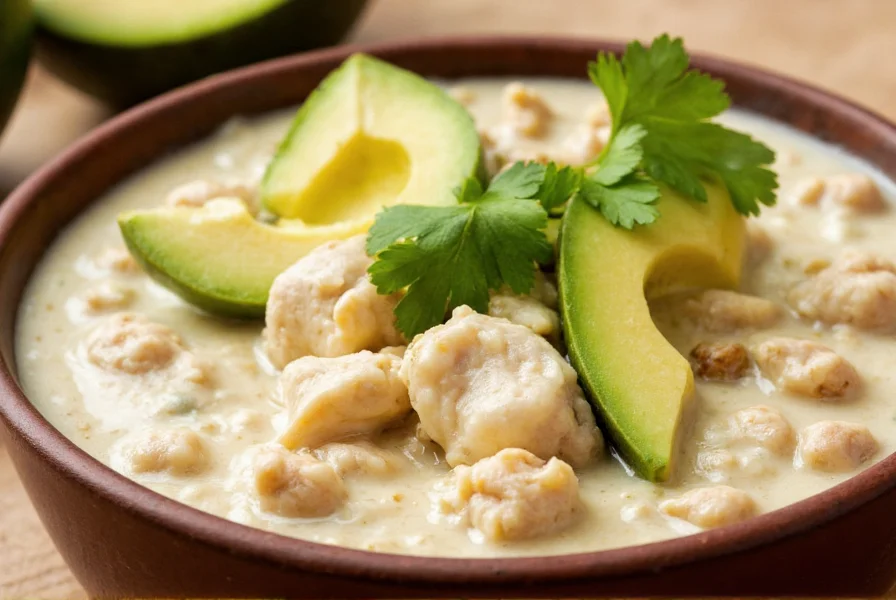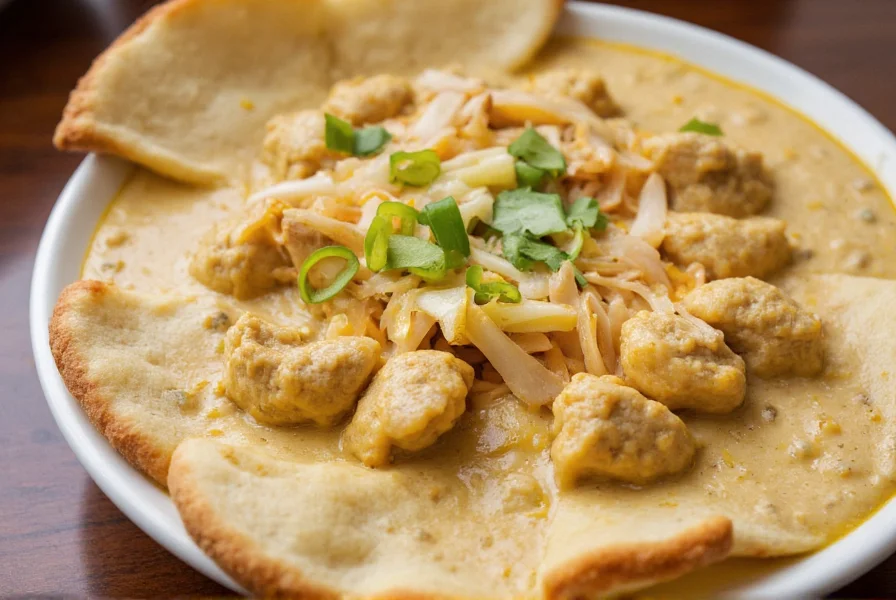White chili with chicken has become a beloved comfort food that offers a refreshing twist on traditional chili recipes. Unlike its tomato-based counterpart, this version gets its distinctive color and flavor profile from white beans, green chilies, and boneless chicken. The absence of tomatoes creates a lighter, creamier texture that appeals to those seeking a less acidic, more versatile chili option perfect for any season.
The Essential Components of Authentic White Chicken Chili
Creating an exceptional white chili with chicken requires understanding its foundational elements. The magic happens when you combine high-quality ingredients that complement rather than compete with each other. At its core, this dish features three critical components that differentiate it from other chili variations.
First, the protein base typically uses boneless, skinless chicken breasts or thighs, which provide lean protein without overwhelming the delicate flavor profile. Many chefs recommend poaching the chicken separately before adding it to the chili to maintain its tenderness and prevent it from becoming stringy during the simmering process.
Second, the bean selection makes or breaks authentic white chili. Great northern beans or cannellini beans work best due to their mild flavor and creamy texture when cooked. Some traditional recipes incorporate navy beans for added thickness. The key is using dried beans that have been properly soaked and cooked, though high-quality canned beans make a convenient alternative when time is limited.
Third, the green chili element comes primarily from roasted poblano peppers and mild green chilies. This combination provides depth without excessive heat, allowing the other flavors to shine through. For those who prefer a bit more kick, adding a small amount of jalapeño can enhance the complexity without dominating the dish.
Step-by-Step Preparation Guide for Perfect White Chili
Mastering white chili with chicken requires attention to technique as much as ingredients. Follow these professional kitchen-tested steps to create a restaurant-quality dish at home.
- Prepare the chicken - Poach 1.5 pounds of boneless chicken in broth with aromatics (onion, garlic, bay leaf) for 15-20 minutes until cooked through. Shred and set aside.
- Sauté the aromatics - In a large pot, cook diced onions and minced garlic in olive oil until translucent.
- Add roasted peppers - Stir in 2 roasted poblano peppers (or 1 can of mild green chilies) and cook for 3-4 minutes to develop flavor.
- Incorporate spices - Add 1.5 teaspoons each of ground cumin and coriander, plus 0.5 teaspoon of dried oregano. Cook for 1 minute to toast the spices.
- Add liquid base - Pour in 4 cups of low-sodium chicken broth and bring to a gentle simmer.
- Include beans - Add 2 cups of cooked white beans (cannellini or great northern) and simmer for 15 minutes.
- Finish with chicken - Return the shredded chicken to the pot and heat through.
- Add finishing touches - Stir in fresh lime juice and chopped cilantro just before serving.
| Ingredient | Amount | Preparation Tip |
|---|---|---|
| Boneless chicken | 1.5 lbs | Poach in broth with aromatics for best texture |
| Cannellini beans | 2 cups cooked | Use dried beans soaked overnight for creamiest texture |
| Roasted poblano peppers | 2 large | Roast over open flame for authentic smoky flavor |
| Chicken broth | 4 cups | Low-sodium preferred to control seasoning |
| Ground cumin | 1.5 tsp | Bloom in oil with other spices for maximum flavor |
Perfecting Your White Chicken Chili: Advanced Techniques
While the basic recipe delivers excellent results, several professional techniques can elevate your white chili with chicken to exceptional status. These methods address common pitfalls and enhance flavor development without complicating the cooking process.
Bean texture control - For the creamiest texture without becoming mushy, add half the beans whole and puree the other half with some broth before incorporating. This technique creates natural thickness while maintaining visual appeal with whole beans throughout the chili.
Layering flavors - Professional chefs often build flavor in stages. Start by roasting fresh poblano peppers over an open flame, then sauté diced onions until deeply caramelized before adding the peppers. This creates multiple flavor dimensions that single-step cooking cannot achieve.
Acidity balance - The final splash of fresh lime juice isn't just garnish—it's essential for balancing the richness. Add juice gradually (starting with 1 tablespoon per batch) until the flavors 'pop' without making the chili taste citrusy. This technique works particularly well with white chili recipes since they lack the natural acidity of tomatoes.

Variations and Customizations for Different Preferences
One reason white chili with chicken has gained popularity is its remarkable versatility. Unlike traditional chili recipes that can be challenging to modify without compromising integrity, white chili readily adapts to various dietary needs and flavor preferences.
Dietary adaptations - For a keto-friendly version, increase the chicken and beans while reducing any added thickeners. Gluten-free preparation requires no special modifications since traditional white chili recipes don't contain wheat products. Vegetarian adaptations work well by substituting vegetable broth and replacing chicken with additional beans and mushrooms for umami depth.
Regional interpretations - Southwestern versions often include corn and a touch of smoked paprika for depth. Pacific Northwest adaptations might incorporate fresh dill and a splash of cream for extra richness. Midwestern takes frequently feature a touch of apple cider vinegar for brightness that complements the milder peppers.
Texture variations - Some prefer their white chicken chili completely smooth, achieved by blending the entire batch. Others enjoy a chunkier texture with visible pieces of chicken and whole beans. The ideal texture typically falls somewhere in between—a slightly thickened broth with distinct but tender components.
Serving Suggestions and Pairing Ideas
White chili with chicken shines when served with complementary accompaniments that enhance rather than compete with its delicate flavor profile. Consider these professional pairing recommendations:
- Toppings - Fresh cilantro, diced avocado, crumbled cotija cheese, and a dollop of sour cream create textural contrast and flavor complexity
- Bread pairings - Warm cornbread with honey butter or crusty artisan bread perfect for dipping
- Side dishes - Simple green salad with citrus vinaigrette or roasted sweet potatoes
- Beverage pairings - Crisp lager, Sauvignon Blanc, or sparkling water with lime
For meal prep enthusiasts, white chili with chicken actually improves in flavor after 24-48 hours as the ingredients meld together. When reheating, add a splash of broth to restore the ideal consistency, as the beans will continue absorbing liquid during storage.

Troubleshooting Common White Chili Problems
Even experienced cooks encounter challenges with white chili recipes. Understanding these common issues and their solutions ensures consistent results every time you prepare this dish.
Problem: Bland flavor - White chili lacks the natural acidity of tomato-based versions, which can make seasoning more challenging. Solution: Build layers of flavor by toasting spices in oil, using homemade broth, and finishing with fresh acid (lime juice). Taste and adjust seasoning at multiple stages rather than just at the end.
Problem: Mushy beans - Overcooked beans turn the chili into an unappealing mush. Solution: Add pre-cooked beans during the last 15 minutes of cooking. If using canned beans, rinse thoroughly and add them even later in the process.
Problem: Separation or curdling - Dairy additions like sour cream can curdle when added directly to hot chili. Solution: Temper dairy by mixing a small amount of hot broth into it first, then gradually incorporate back into the main pot.
Problem: Too thin consistency - White chili should have a hearty but not soup-like consistency. Solution: Reserve some beans, puree them with broth, and stir back into the pot. Avoid using flour or cornstarch, which can create an artificial texture.
Frequently Asked Questions About White Chili With Chicken
What's the difference between white chili and regular chili?
White chili differs from traditional red chili primarily through its ingredients and flavor profile. While regular chili uses tomatoes, red peppers, and often beef, white chili features white beans, green chilies, chicken or turkey, and excludes tomatoes entirely. This creates a lighter, creamier texture with more subtle heat and a flavor profile that highlights cumin, coriander, and fresh herbs rather than the smoky, acidic notes of tomato-based chili.
Can I make white chicken chili in a slow cooker?
Yes, white chicken chili adapts well to slow cooking. For best results, sauté onions, garlic, and spices first, then transfer to the slow cooker with all other ingredients except fresh herbs and lime juice. Cook on low for 6-7 hours or high for 3-4 hours. Add shredded chicken during the last hour to prevent overcooking. Finish with fresh cilantro and lime juice just before serving for maximum flavor.
How long does white chili with chicken keep in the refrigerator?
Properly stored in an airtight container, white chili with chicken maintains quality for 4-5 days in the refrigerator. The flavors often improve after 24 hours as ingredients meld together. When reheating, add a small amount of broth to restore the ideal consistency, as the beans will continue absorbing liquid during storage. For longer preservation, freeze portions for up to 3 months.
What are the best beans for white chili?
Cannellini beans and great northern beans are ideal for white chili due to their mild flavor, creamy texture when cooked, and ability to hold their shape during simmering. Navy beans work well for a thicker consistency. For optimal results, use dried beans that have been properly soaked and cooked, though high-quality canned beans make a convenient alternative. Avoid chickpeas or kidney beans, which have stronger flavors that don't complement the delicate profile of white chili.
How can I make white chicken chili thicker without changing the flavor?
To thicken white chicken chili without altering flavor, reserve one cup of cooked beans, puree them with 1-2 cups of broth until smooth, then stir back into the chili. This technique adds natural thickness from the beans' starches while maintaining the original flavor profile. Avoid flour or cornstarch, which can create an artificial texture. Simmering uncovered for 15-20 minutes also gently reduces the liquid while concentrating flavors.











 浙公网安备
33010002000092号
浙公网安备
33010002000092号 浙B2-20120091-4
浙B2-20120091-4